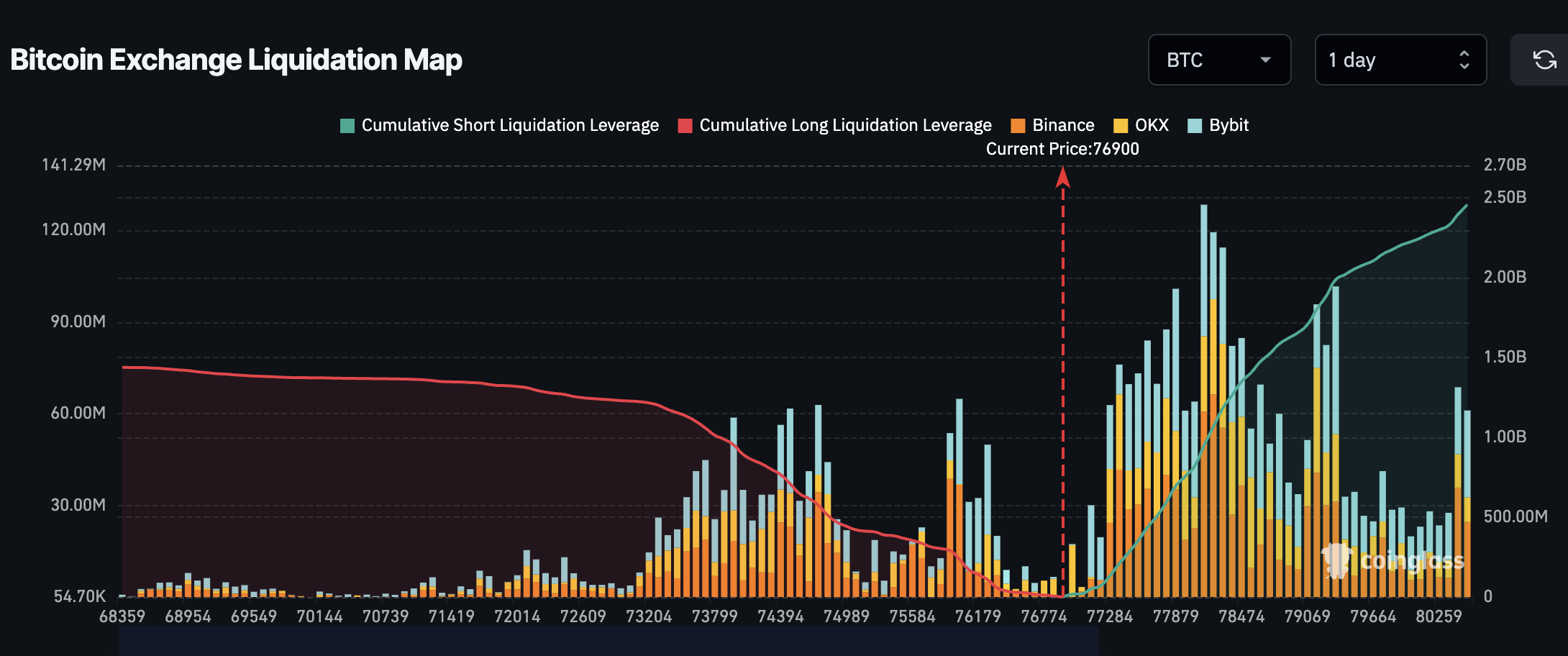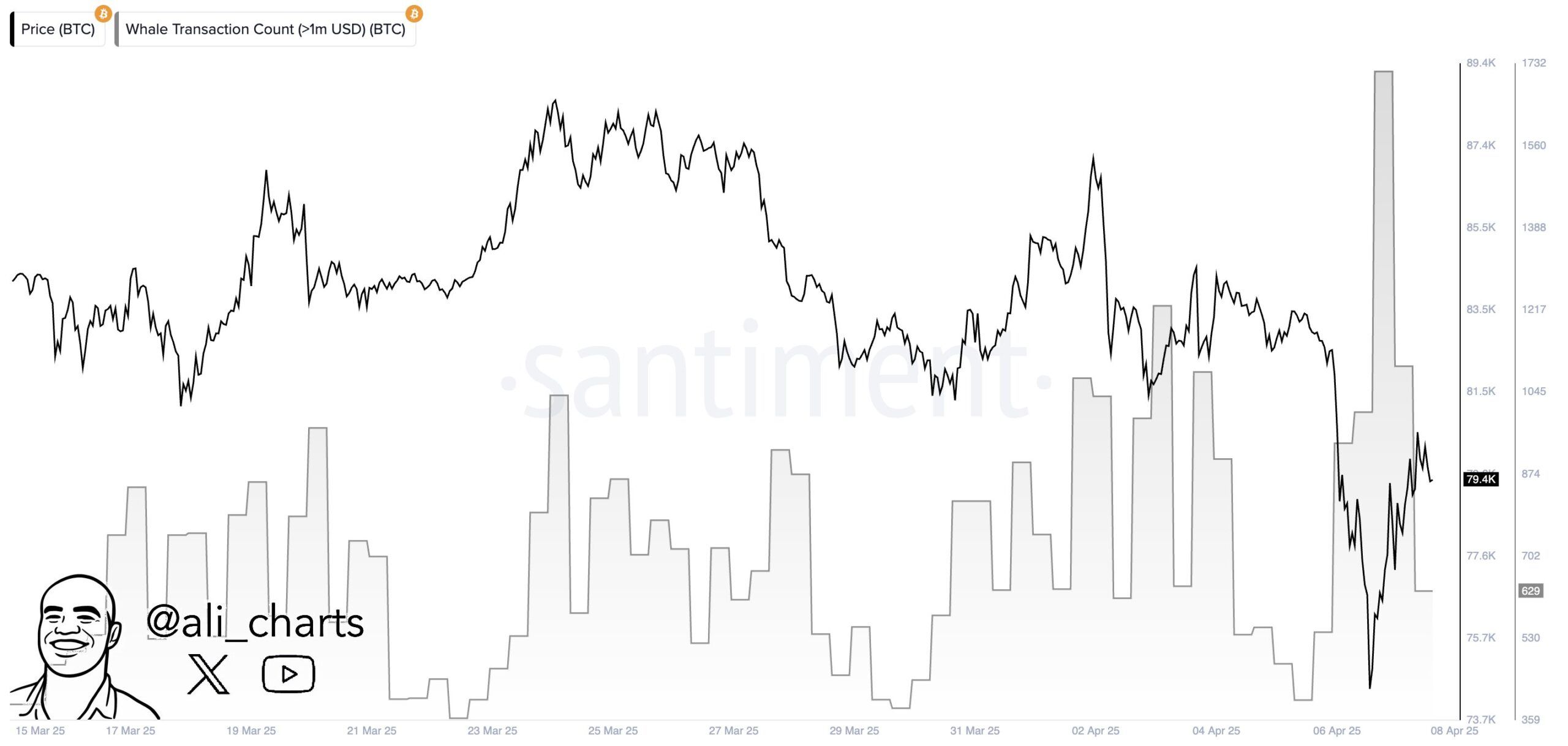-
The global crypto market is experiencing significant volatility as tariff-induced fears impact investor sentiment, resulting in sharp declines across major cryptocurrencies.
-
Market analytics reveal a substantial surge in liquidation events due to panic selling by major players, amplifying market uncertainties.
-
According to COINOTAG, one analyst noted, “The present market dynamics indicate a bifurcation in whale behavior, revealing both fear and opportunity.”
The crypto market faces turbulence as new global tariffs spark panic selling, pushing Bitcoin and Ethereum to significant lows amid varied whale actions.
Market Reactions to Emerging Tariff Policies
The ripple effect of the newly introduced global tariff policies has left the crypto market grappling for stability. Bitcoin, having reached a critical juncture, has slipped below the $75,000 threshold, marking a 5.75% decline in just one day. Ethereum’s decline has been even more pronounced, now trading under $1,400, with a drop of 9.36%.
Data collected from Coinglass indicates a potential critical liquidation point for Bitcoin. Should prices fall below $74,000, analysts predict that over $953 million worth of buy orders might be triggered on major exchanges, hinting at the devastating fallout expected if the market continues its downward trajectory.

The growing market anxiety is underscored by the Fear and Greed Index, which currently indicates an “Extreme Fear” phase among investors. This sentiment has significantly contributed to a decline in major cryptocurrencies, pushing prices to their lowest levels for several weeks.
Whale Activity in Turbulent Times
In the current market turmoil, notable crypto whales have initiated mass sell-offs to mitigate risk. A striking action includes the sale of 5,094 ETH by the “Long ETH Whale,” incurring losses that exceed $40 million. Similarly, the wallet dubbed Pump.fun has liquidated 84,358 SOL at an average price of $105.
Interestingly, even politically affiliated cryptocurrencies have not escaped the downturn, with the WLFI project linked to Donald Trump reportedly selling 5,471 ETH at approximately $1,465 each.
Confidential sources suggest that the “7 Siblings” group is liquidating their MKR assets while still retaining 6,293 MKR. Further notable activity has seen three significant wallets unstaking 168,498 SOL valued at $17.86 million. Another whale moved 4,000 ETH from ether.fi to Binance and two addresses combined to sell 150,000 SOL within 14 hours—a testament to the mounting pressure amongst heavy investors.
Signs of Strategic Accumulation: A Contrarian Viewpoint
Amid the prevailing market gloom, a faction of crypto whales is seizing the opportunity to accumulate assets. Observational data from IntoTheBlock indicates that net outflows of Bitcoin from centralized exchanges exceeded $220 million just yesterday, signifying a trend towards long-term holding despite the negative market sentiment. In a strategic move, a notable whale allocated $6.93 million to acquire 4,677 ETH at an average price of $1,481.

Analyst Ali highlighted that during Bitcoin’s rebound from $74,500 to $81,200, over 1,715 transactions exceeding $1 million were recorded on-chain, suggesting that some investors—often referred to as “smart money”—are banking on a potential market reversal.

The prevailing market crash is significantly impacted by the anxiety surrounding the recently implemented US tariff regulations, causing fears of a broader economic slowdown. This environment creates a ripple effect across various asset classes, including traditional financial markets.
Moving forward, investors may face dual scenarios: a failure to maintain Bitcoin above $74,000 could lead to intensified forced liquidations, further depressing prices, while persistent accumulation by whales may spark recovery, potentially lifting Bitcoin towards $80,000 and Ethereum above $1,500, contingent upon resolving tariff-related issues.
Conclusion
In summary, the current landscape of the crypto market illustrates a sharp divide in investor sentiment and strategic action. While some whales are liquidating assets in fear of further downturns, a significant portion of savvy investors are reportedly positioning themselves for a potential rebound. As the situation evolves, maintaining a watchful eye on both the tariff developments and market movements will be essential for stakeholders navigating this turbulent environment.
